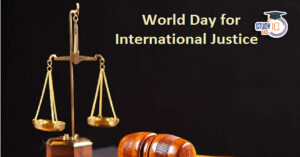Table of Contents
Context: A recent order from the Madhya Pradesh High Court has sparked concerns over potential misinterpretations of the law regarding inter-faith marriages and the scope of the Special Marriage Act, 1954.
Background of the Issue
- The controversy arose from a petition filed by an unmarried Hindu-Muslim couple seeking protection for their inter-faith marriage.
- The Madhya Pradesh High Court questioned the validity of such a marriage under the Act and denied police protection to the couple on the grounds that their marriage would be invalid.
- This decision is seen as a reversal of the jurisprudence on the right to choose a partner and the well-established objectives of the Special Marriage Act.
Erroneous Considerations
- Typically, when a petition for police protection is filed under Article 226 of the Constitution, the High Court assesses the violation of the petitioners’ rights and the threats they face.
- High Courts have extended protection to unmarried individuals facing societal threats, as seen in cases of same-sex couples and live-in couples.
- Contrarily, the Madhya Pradesh High Court focused on the merits of the impending marriage rather than the threat assessment, ignoring the protection provided under Article 21 of the Constitution, which safeguards the right to life and liberty.
- Comparison with Other Courts:
- Madras High Court granted protection to a lesbian couple.
- Punjab and Haryana High Court protected a live-in couple, focusing on their fundamental rights.
Dilution of the Special Marriage Act
- The Madhya Pradesh High Court’s order undermines the Special Marriage Act’s objectives, erroneously referencing a Supreme Court precedent (Mohammed Salim vs. Shamsudeen, 2019) which dealt with property succession under Mohammedan Laws, not the validity of inter-faith marriages.
- The court misinterpreted Section 4 of the Special Marriage Act, which excludes marriages between persons within prohibited degrees of relationship, failing to recognize that the Act facilitates marriages between any two Indian nationals regardless of their faith.
Social and Political Context
- The order is significant in today’s social and political climate where inter-faith and inter-caste marriages face vigilantism and right-wing propaganda, such as the “love jihad” conspiracy.
- There are ongoing challenges to unconstitutional provisions within the Special Marriage Act, like prior notice requirements, pending before the Supreme Court.
- The Supreme Court’s ruling in Shafin Jahan vs. Asokan K.M. (2018) emphasised that marriage intimacies lie within a core zone of privacy, inviolable by social disapprova The Constitution protects personal liberty from societal scrutiny.
Key Judicial Precedents and Principles
- The Shafin Jahan case prioritises an individual’s right to choose a life partner over faith or caste-based restrictions, reinforcing the principles of autonomy, privacy, and liberty.
- Constitutional courts must remember that jurisprudence favours these values, ensuring protection of individual choices in personal matters.
| Special Marriage Act 1954 |
Basic Provisions
Age Limit: The minimum age for marriage under the SMA is 21 years for males and 18 years for females. Differentiation from Personal Laws:
|


 World Day for International Justice 2025...
World Day for International Justice 2025...
 Anusandhan National Research Foundation ...
Anusandhan National Research Foundation ...
 Places in News for UPSC 2025 for Prelims...
Places in News for UPSC 2025 for Prelims...





















